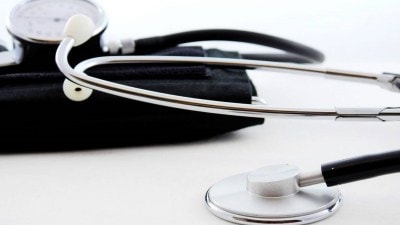Why do we need to watch out for triglycerides? What are safe levels?
Do not wait for triglycerides to hit through the roof. Arrest them when they are even slightly higher than normal levels, especially if you have heart disease or have other risk factors such as diabetes, high blood pressure or are a smoker, advises Dr Suranjit Chatterjee, Senior Consultant, Internal Medicine, Indraprastha Apollo Hospital, Delhi
 If your triglycerides are above 200 mg/dL, then you are 25 per cent more likely to suffer from cardiovascular disease than someone with a normal level (Image source: Getty Images/ Thinkstock)
If your triglycerides are above 200 mg/dL, then you are 25 per cent more likely to suffer from cardiovascular disease than someone with a normal level (Image source: Getty Images/ Thinkstock)Most of the conversation around preventing risk to heart health centres around the umbrella term of cholesterol. But we need to talk about triglycerides, which are a type of fat or lipid present in foods, especially butter, oils and other fats that are consumed by the human body. While these calories are consumed by us, they might not be necessarily required by the body, which then converts them to triglycerides and stores them in fat cells. When the human body requires energy, they get released to provide energy in between meals. But if you consistently load up on more calories than your body can burn, you may have high triglyceride levels, known medically as hypertriglyceridemia.
If your triglycerides are above 200 mg/dL, then you are 25 per cent more likely to suffer from cardiovascular disease than someone with a normal level. Research states that the more triglycerides a patient has in the blood, the more likely the patient will develop atherosclerosis or deposition of fat on the walls of the heart. Atherosclerosis can lead to carotid artery disease, coronary artery disease and peripheral artery disease. Over time and without treatment, these conditions can cause a heart attack or stroke. High triglycerides aren’t a heart disease, but a risk factor for heart disease. High cholesterol is another risk factor that relates to the lipids (fats) in the blood. Some people have both high triglycerides and high cholesterol, and this combination puts them at an even higher risk. High triglycerides and cholesterol can result in dyslipidemia that refers to unhealthy levels of one or more kinds of lipid (fat) in the blood. Extremely high triglycerides can also cause acute inflammation of the pancreas (pancreatitis). They are also a sign of Type 2 diabetes or prediabetes, metabolic syndrome, chronic kidney disease and hypothyroidism.
WHAT LEVELS OF TRIGLYCERIDES ARE SAFE?
Watch out for the following numbers:
· Normal — Less than 150 milligrams per deciliter (mg/dL), or less than 1.7 millimoles per liter (mmol/L)
· Borderline high — 150 to 199 mg/dL (1.8 to 2.2 mmol/L)
· High — 200 to 499 mg/dL (2.3 to 5.6 mmol/L)
· Very high — 500 mg/dL or above (5.7 mmol/L or above)
A word of caution here, do not wait for triglycerides to hit through the roof before you address the need to reduce them. Arrest them when they are even slightly higher than normal levels, especially if you have heart disease or have other risk factors such as diabetes, high blood pressure or are a smoker.
HOW DO I SENSE DYSLIPIDEMIA?
If a patient has dyslipidemia, it usually means that the LDL levels (bad cholesterol) or the triglycerides are high. It can also mean the HDL (good cholesterol) levels are low and are not enough to neutralise the LDL. Triglycerides are correlated with HDL, if they are high, HDL goes low and vice versa.
Dyslipidemia is divided up into primary and secondary types. Primary dyslipidemia is inherited. Secondary dyslipidemia is an acquired condition. That means it develops from other causes, such as obesity or diabetes.
Most people are unaware that they have dyslipidemia unless it is severe. During a routine blood test, dyslipidemia is usually diagnosed by a doctor. People with extremely high cholesterol levels and triglycerides may develop xanthomas (waxy, fatty plaques on their skin) or corneal arcus (cholesterol rings around the iris of their eye). Obesity has been linked to high cholesterol, and this may prompt a provider to assess your cholesterol level.
Dyslipidemia causes no symptoms in most people, but it can lead to symptomatic vascular diseases, such as coronary artery disease (CAD), stroke, and peripheral arterial disease. If dyslipidemia is not controlled, it can be fatal. Several behaviours can contribute to dyslipidemia like excessive alcohol consumption, obesity and sedentary behaviour. Age is another risk factor for high cholesterol. Until menopause, women have lower LDL levels than men. This is when women’s LDL levels begin to rise.
WHAT ARE RISK FACTORS?
The various factors that increase the chance of developing dyslipidemia and high triglyceride levels can include obesity, lack of regular exercise, consumption of alcohol and tobacco, consumption of diet rich in saturated and trans fats, advancing age, hereditary conditions and other medical conditions like chronic kidney or liver ailments, hypothyroidism, diabetes etc.
DIAGNOSIS AND MANAGEMENT
The condition can be diagnosed by checking LDL, HDL and triglycerides through a simple blood test only. The levels will indicate the high, low or healthy range of these components of cholesterol. Generally, for managing dyslipidemia, few lifestyle changes and supplements are recommended. This can include:
· Reducing the consumption of unhealthy fats
· Exercising regularly for 30 minutes
· Reducing or avoiding alcohol consumption
· Maintaining a healthy body weight
· Eating plenty of fibre-rich food that can include fruits, vegetables and whole grains
· Drinking 2-3 litres of water per day
· Sleeping 7-8 hours at night
If the problem is not cured by these measures, then the doctor can recommend a few medications, including statins, that halt cholesterol production in the liver. Also, the doctor may prescribe other cholesterol medications in addition to statin or in place of statin, depending on the situation.



- 01
- 02
- 03
- 04
- 05
























